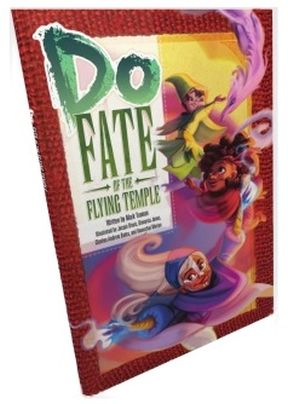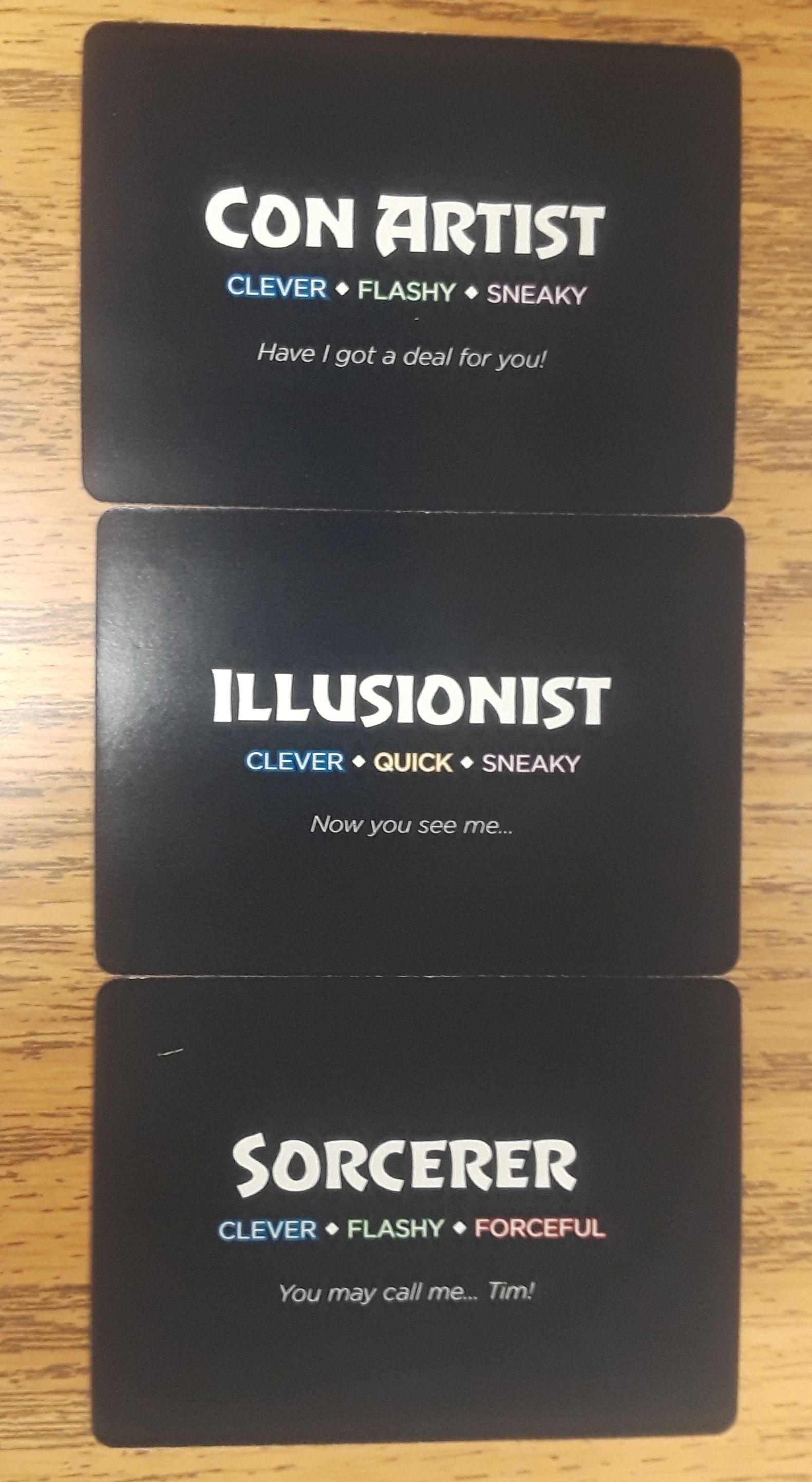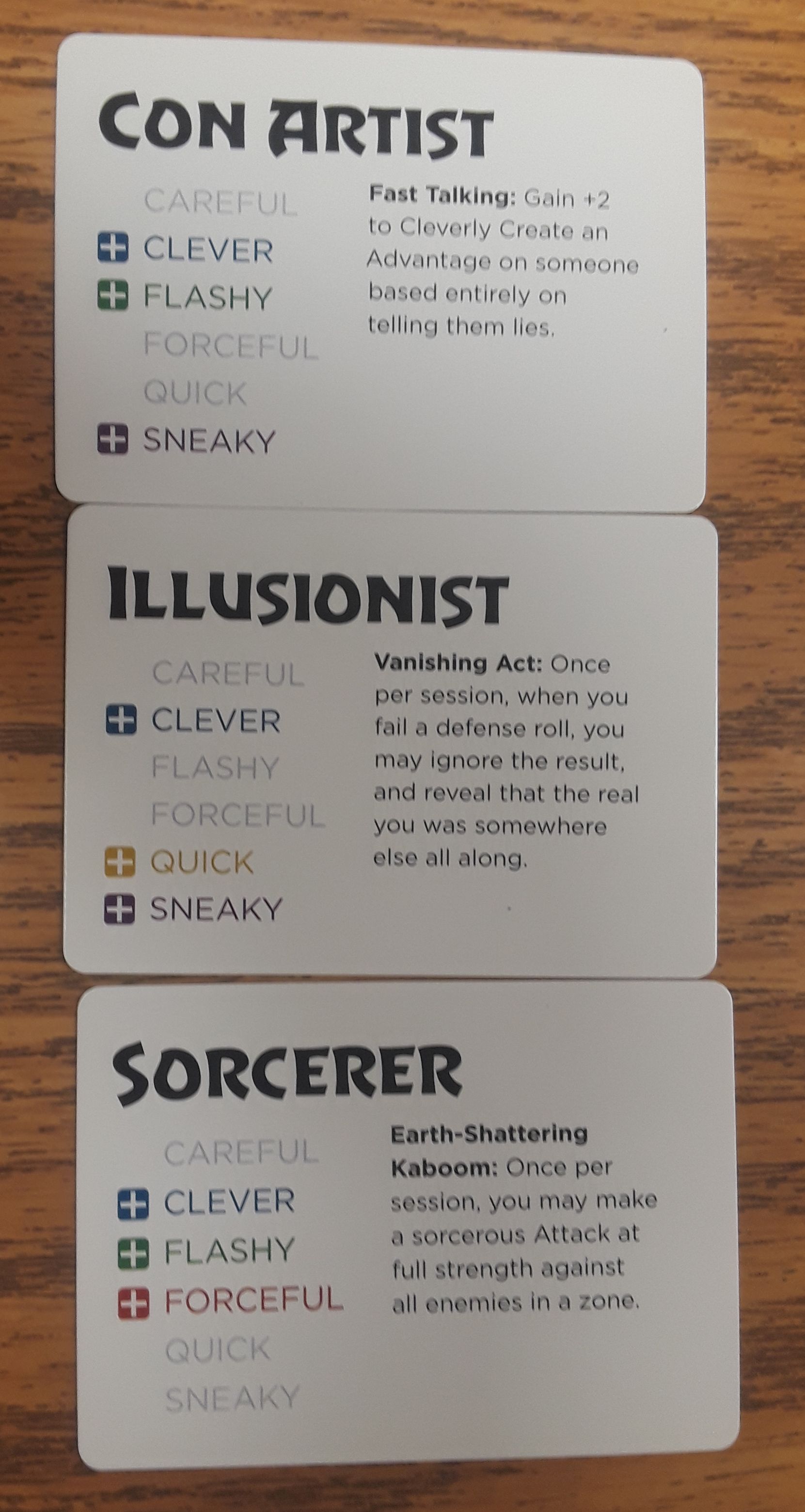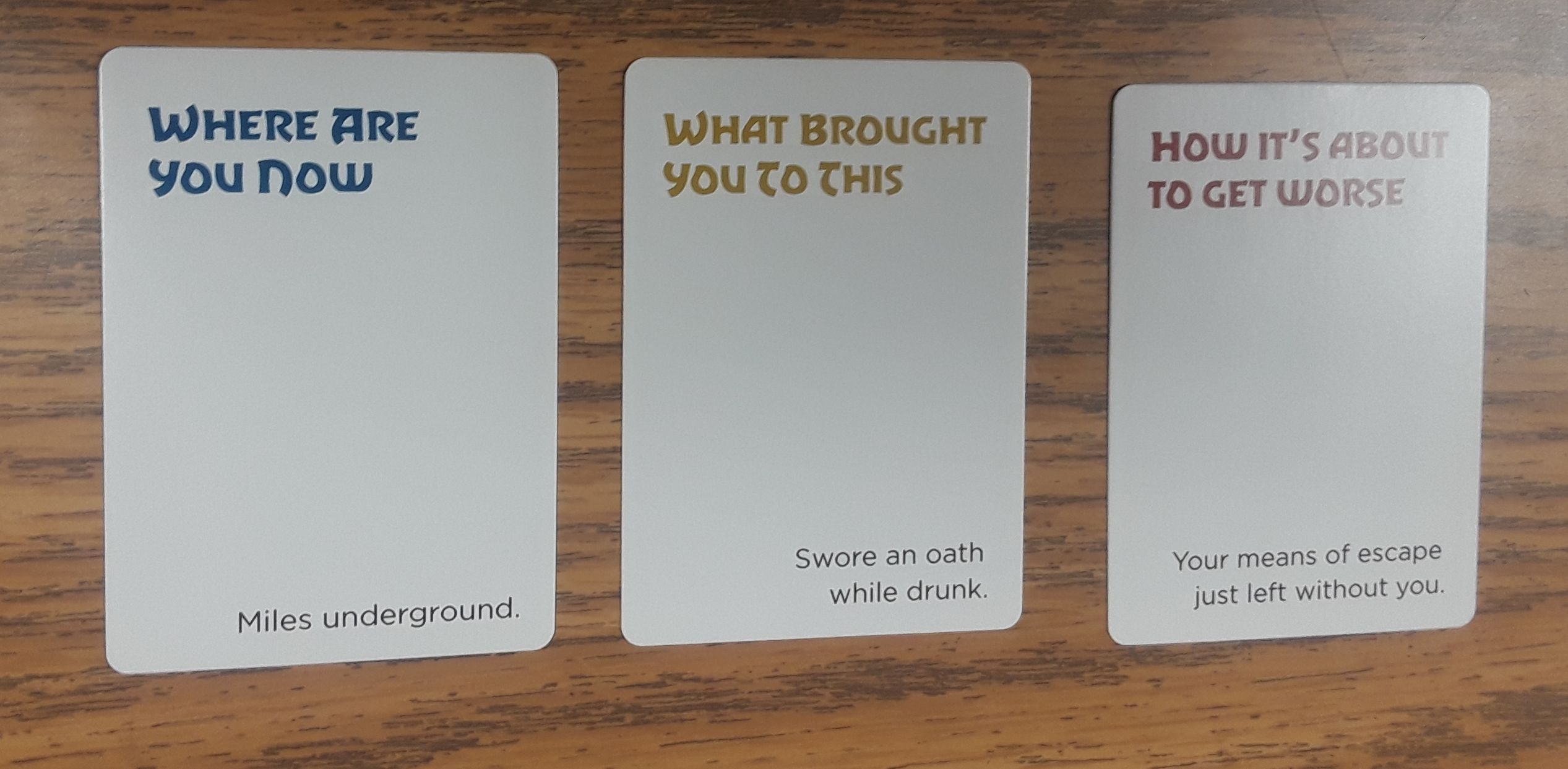
For some time now, I’ve meant to purchase Do: Fate of the Flying Temple. Now I’ve done so. Do, co-published by Evil Hat Productions and Smart Play Games, written by Mark Truman, promises to be “a family-friendly standalone roleplaying game.” I’ve seen this sort of claim before made by a few other games. Upon investigation, I discovered that, while those games might be family-friendly, it ain’t my family they’d be friendly to. Also, I facilitate Ludi Fabularum, a story game club, at the school whereat I teach. More than one of those other so-called family-friendly games would probably get me reprimanded if I allowed them at a Ludi Fabularum.
I am pleased to report that Do lives up to its claim. For the rest of this mini-review, I’m going to assume that you’re familiar with Fate Accelerated Edition; therefore, I’m not talking about the rules. They’re pretty much standard FAE rules, with two noteworthy exceptions, that I will address in a bit. If you don’t know FAE or don’t like FAE, that’s okay. Do‘s biggest selling point isn’t the game system; it’s the worlds of Do.
The Worlds of Do
At the center of everything floats the Flying Temple, home to wise and benevolent monks who master the martial arts in order to master themselves rather than fight others. Children who arrive at the Temple’s gates are adopted by the monks. These children become pilgrims. They’re not monks, but they’re not outsiders either. The monks teach their skills and wisdom to the children, who then fly to the many worlds of Do, answering letters sent by the troubled to the Temple. The pilgrims try to solve those troubles using the non-violent methods of the monks.
The worlds of Do are not planets like Earth or Mars. Instead, they are more like floating islands, drifting on the winds that blow through the vast sky in which everything moves and lives. To quote the rules, “There is no ‘outer space’ as we know it, with its harsh vacuum and hazardous cosmic rays.” There is sky. There are clouds and birds and worlds and flying whales and, like everywhere you find people, there is trouble. Those experiencing trouble write letters to the Temple. The monks read the letters, decide which troubles need attention, and then send pilgrims — children — to solve those troubles.
The players’ characters are pilgrims, remarkable children who live at the Temple under the tutelage of the monks. One day, all pilgrims face graduation day. Their pilgrimages have an end date, and after that they are pilgrims no more. Instead, they become monks who tutor pilgrims or else they depart the Temple to live among the worlds of Do. Regardless, they are player characters no longer.
About Pilgrims
Pilgrims are made pretty much like any FAE character. They have aspects, stunts, and approaches, but the aspects work a little differently. Every pilgrim’s name has two parts: a banner and an avatar. The former is “an adjective or verb that represents how your pilgrim gets into trouble.” The latter is “a noun that reflects how your pilgrims helps people.” Three sample characters are included in the book, and chapter two goes into admirable detail about banners and avatars. In normal FAE-speak, a pilgrim’s banner is his trouble, and his avatar is his high concept. Every pilgrim also has a dragon aspect. This aspect describes something about the newly hatched dragon that the pilgrims must protect, guide, and raise. The players, through the dragon aspects of their characters, create the personality, appearance, abilities, et cetera of the young dragon.
In simplest terms, the dragon is a non-player character controlled by the GM, given qualities by the players, a collection of aspects usable by all of the players and the GM, and, therefore, a source of both strengths and troubles. In my opinion, the dragon is the cleverest piece of Do. It’s something that is so simple that I wonder why I didn’t think of it.
The Temple Is Missing!
If you choose to run a Do campaign, it begins when the pilgrims return from a mission to discover that Temple is missing and, in its place, is a dragon egg. Where is the Temple? Where did this egg come from? What is the nature of the dragon within? All of the questions are answered during play as a sort of metaplot that moves toward a defined end of the campaign. As the game progresses and pilgrims answer letters (more on that below) and gradually solve the mystery of the Temple, the dragon gains more aspects. At the end of each letter (read: adventure), the dragon learns something new. It gains a new aspect. When the dragon gains its tenth aspect, the campaign draws to a close.
Mail Call!
As mentioned above, the people of the worlds of Do send letters to the monks, who read those letters and then send out pilgrims to solve the problems in the letters. When the Temple vanishes and the dragon hatches, the letters don’t stop. Instead, the dragon coughs up letters, and the pilgrims find themselves without the guidance of the monks. Problems must be solved, and the dragon accompanies the pilgrims, learning from how they act what sort of dragon it should be. In other words, the way the pilgrims solve problems ends up teaching the dragon, which will eventually become a very powerful creature indeed, how it ought to solve problems. Whether the pilgrims — mere children — like it or not, the fate of the worlds of Do is in their hands.
In Conclusion
If you like FAE, get Do. It is a remarkable example of what FAE can accomplish. If you don’t like FAE, get Do. It’s a fascinating idea for a multi-world campaign where solving problems via violence is possible but never without consequences, not the least of which is the fact the pilgrims end up teaching the dragon that the way to solve problems is via force.
I cannot recommend Do strongly enough, and I look forward to challenging the students who participate in Ludi Fabularum with its many worlds.
Tags: Fate Accelerated Edition, reviews






